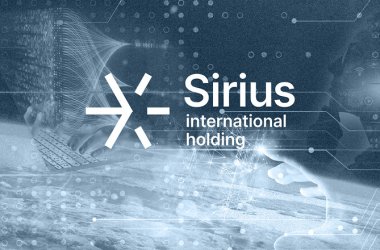By: Jacob Chacko, Regional Director – Middle East & South Africa at Aruba, a Hewlett Packard Enterprise company

What is a cognisant industrial site, and why is the Industrial Internet of Things (IIoT) relevant to it? A hyper-aware industrial site is instrumented such that applications are cognisant of the contextual status of the environment, machines, occupants, inventory, service needs, security, and safety. IIoT is collectively the eyes and ears of a cognisant plant, and generates logical representations of physical data, i.e., temperature, flow, current consumption, and speed, among many others. IIoT data are supplemented by contextual information generated by a plant’s data network, i.e., identity, location, and applications in use.
The combination of data and context enables applications to be cognisant, and plants to become smart enough to adapt to the environment, machines, and workers. The richer the set of data and context, the more adaptive the site can become. Some plants have only limited cognisance, while others are fully instrumented and hyper-aware.
IIoT is characterised by devices and systems that are ruggedly designed and constructed, capable of operating in environmentally uncontrolled environments with high mean time between failures, operated using a wide range of wired and wireless physical layers and communication protocols, often deployed in firewalled silos without access to the Internet, and capable of deterministic operation in closed-loop control applications.
According to McKinsey the total economic impact of IIoT in worksites and factories in 2025 will be $1.3T-$4.6T. The top identified areas include operations optimisation, predictive maintenance, inventory optimisation, health and safety, and human productivity monitoring:
- Operations optimisation is expected to increase worksite productivity by 5-10%, and lower costs by 5-12%;
- Predictive and improved maintenance are expected to yield 3-5% productivity gains and lower costs by 10-40%;
- Inventory optimisation is expected to lower costs by 20-50%;
- Health and Safety are expected to reduce costs by 10-20%; and
- Human Productivity Monitoring is expected to yield a 5-10% increase in productivity.
Below are some tips for designing hyper-aware industrial sites:
IIoT Security: IIoT stands out as a category because in no other industry is the impact of a security breach so impactful or the defenses so poor. Adhering strictly to a zero trust framework, IIoT devices should not be allowed on a network unless and until trust can be asserted to the same standard as it is with IT devices. The framework should leverage contextual information from a multitude of sources to scrutinise user and device security posture before and after they connect.
Business Transformation Enabled: Companies frequently rush head-first into IIoT projects without clearly defining objectives, value propositions, or the suitability of tools. The first order of business in any IIoT project is to identify the strategic business goals to be achieved. Those should flow down into a series of specific objectives that rely on successfully delivered business moments. The IIoT architecture is the tool by which 14 relevant context and data can be successfully extracted and exploited in favor of the strategic goals.
Building a Contextually-Adaptive Plant: Factory asset tracking systems feed real-time inventory and work-in-process data to analytics engines to more efficiently manage production lines. If inventory delivery is delayed production lines can be slowed instead of stopped, reducing expensive scrap, rework, and re-start expenses. The result is a contextually adaptive factory that automatically balances the speed of production with the availability of parts. Asset tags are an important building block of an adaptive factory.
Bridging IT/ OT Plant-Wide for Uniform Visibility & Security: What do CIOs and COOs have in common? Both want uniform visibility into, and security of, OT traffic and device behavior, with IT policy management supervision of crossover traffic. Bridging the IT and OT divide requires a recognition that both definitions of trust, and both modes of operations, are important to achieving enterprise-wide data visibility and cybersecurity. One without the other would put an enterprise at risk financially and operationally.
Automating Plant Network Access for Service Personnel and Contractors: Enhancing human productivity necessitates making devices and the environments in which they work more cognisant of, and automatically adaptive to, the needs of employees, service personnel, and contractors. On-boarding service personnel and contractors onto plant networks has historically been challenging because of network security concerns. The trick is to both simplify guest access so it doesn’t create an administrative burden and implement security policies that tightly control what guests can do and access while on the network.
Migrating from Break/ Fix to Predictive Maintenance: Addressing maintenance proactively to minimise downtime, and maximise the utilisation and performance of assets, can reduce maintenance costs substantially. Juggling the high cost asset performance management solutions, and its security risks, against the benefits of lower downtime and fewer disruptions is a challenging calculus. An optimal solution is to leverage secure, robust IT infrastructure that is already deployed in a plant to capture machine status from IIoT sensors. A dual-use IT/IIoT network is more economical to deploy and can eliminate gateways and the security threat they pose.
Physical Distance Monitoring and Contact Tracing: Workplace safety extends beyond physical and environmental hazards. Today, physical distance monitoring and contact tracing are essential for back-to-work and stay-healthy-at-work initiatives. While there is no single physical distance monitoring and contact tracing application that will work for all enterprises, real-time location services and identity stores have an essential role to play in every workplace infection control solution.
Conclusion
The digital transformation of IIoT is focused on delivering meaningful business value across all facets of local and remote operations. Aruba’s Edge Services Platform (Aruba ESP) addresses all the imperatives industrial facilities. It is the industry’s first AI-powered platform designed to automate, unify and protect the edge for businesses of any size or type. Aruba ESP includes attributes of Unified Infrastructure, Zero‑Trust Security, AI Powered Operations (AIOps), and Flexible Consumption/Financing Models. Working in concert with key technology partners, Aruba helps bridge the IT/OT divide and boost efficiency, productivity, reliability, safety, security, and profitability. By enabling uniform visibility and uniform security from I/O to CEO and accommodating the different operating modes of both IT and OT, Aruba is able to address the needs of CIOs, COOs, and CISOs at a price-point that checks the box for CFOs.





